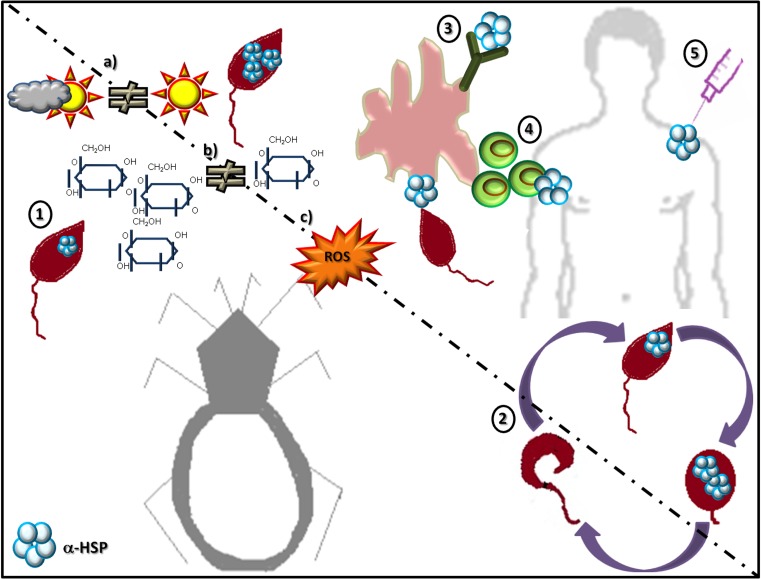Fig. 3.
Main activities of sHSPs in protozoan and helminth parasites. For simplicity, a parasite with a digenetic life cycle is used to illustrate the different reported activities. Five types of activities have been reported. (1) Expression levels of the protein can rise in response to conditions of stress, including (a) heat stress, (b) nutritional stress, and (c) oxidative stress. (2) The proteins show developmental stage-specific expression patterns; depending on the developmental stage, these proteins may be absent or expressed to a greater or lesser extent. (3) When the parasite interacts with the host, these proteins can be recognized by the immune system and induce a humoral response, generating specific antibodies or (4) stimulating certain cell types of the host. (5) These proteins can also provide immunoprotection against the disease produced by the parasites expressing them

